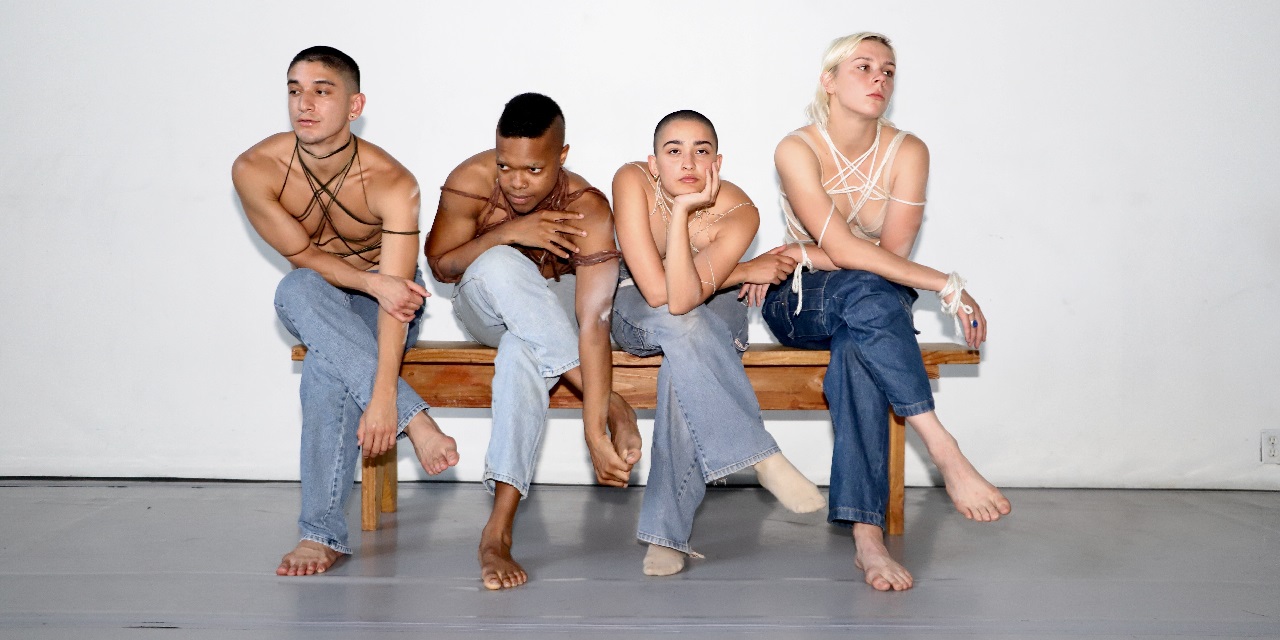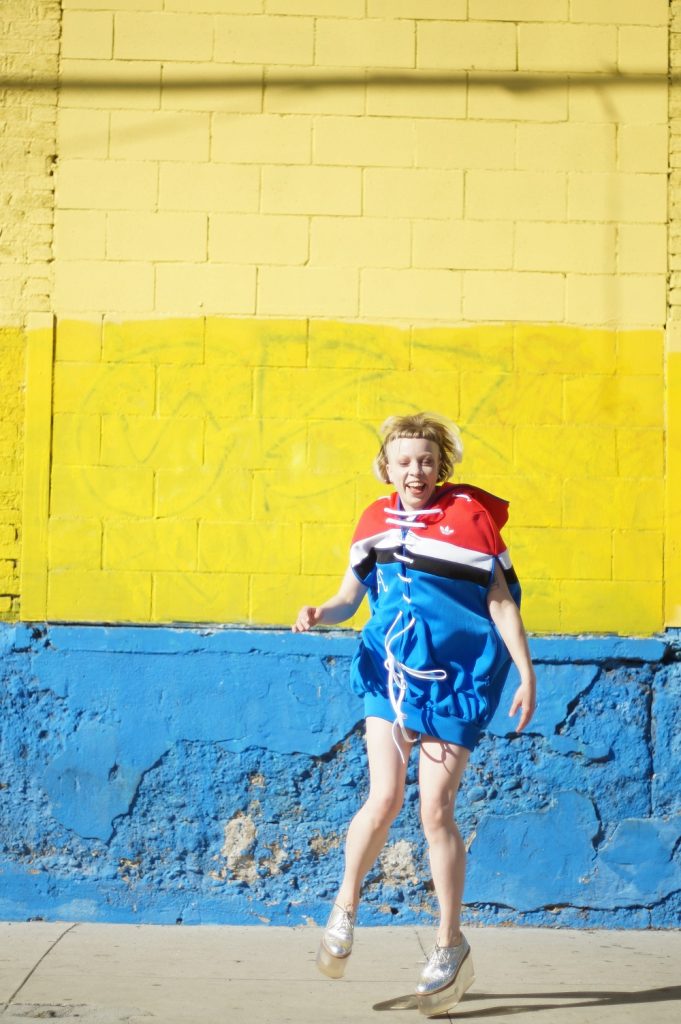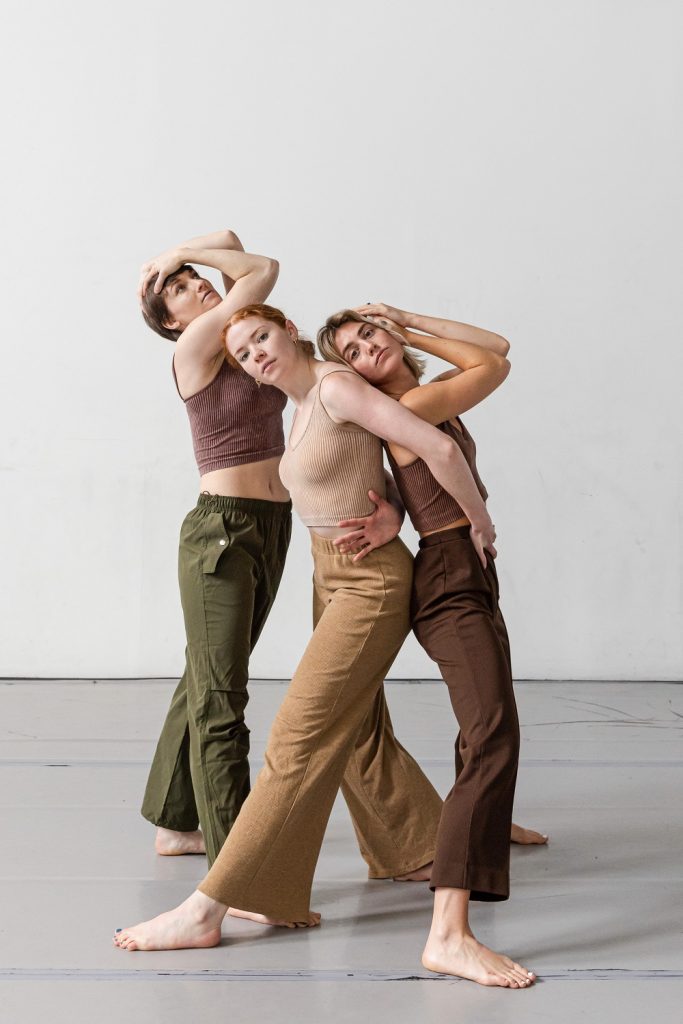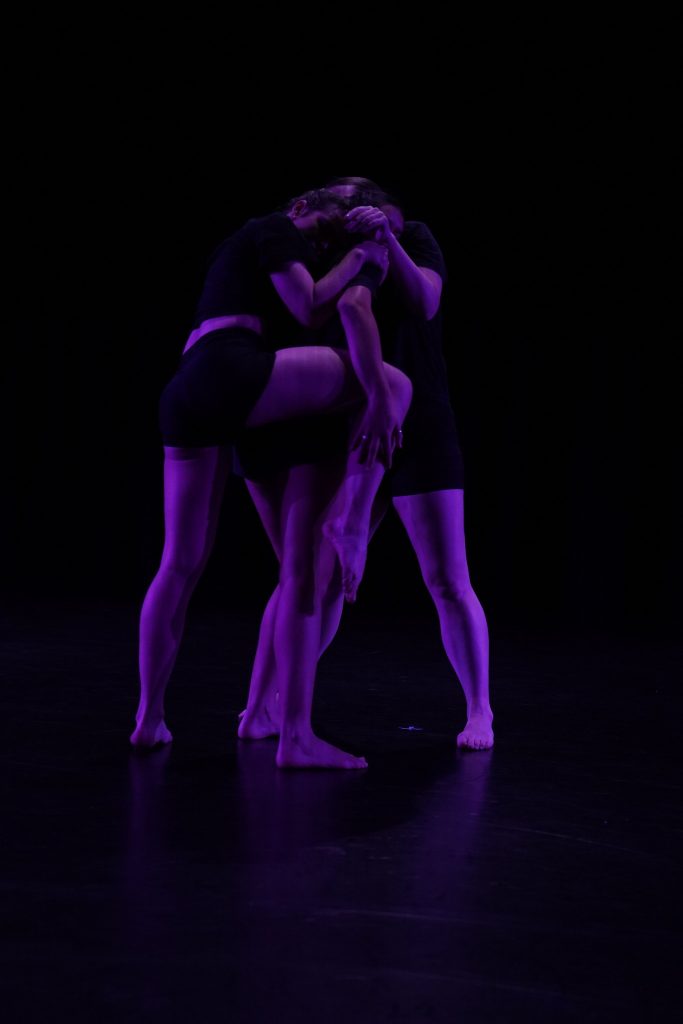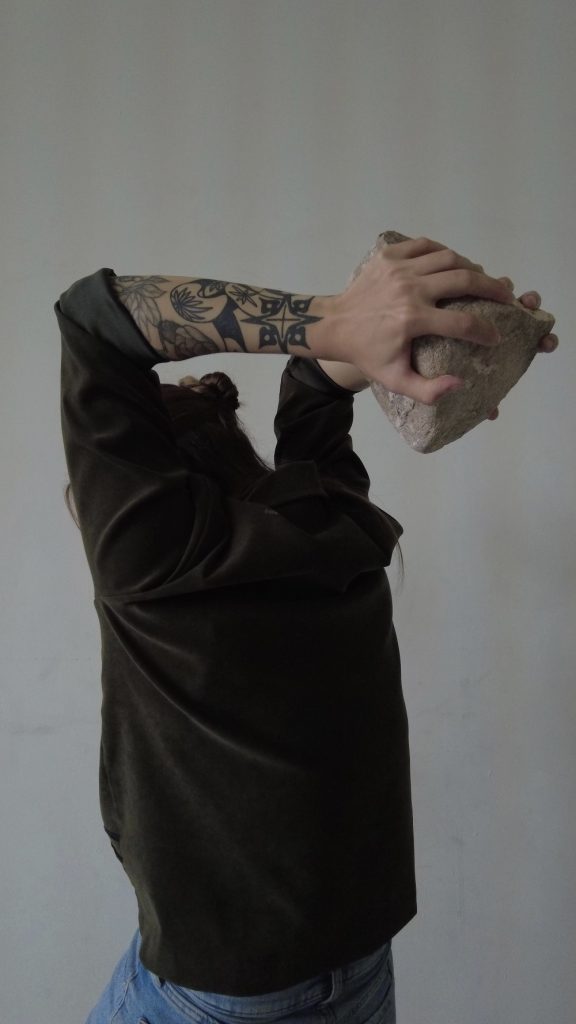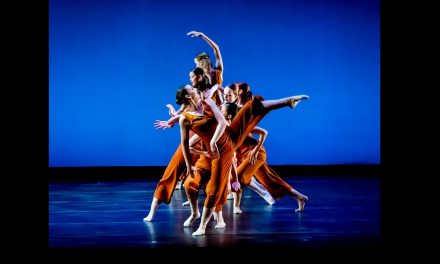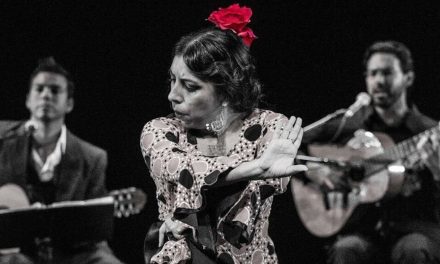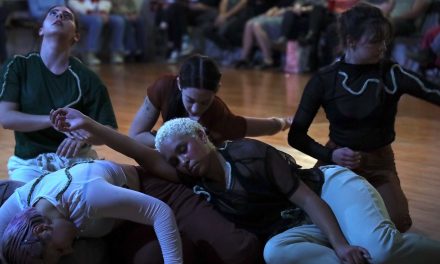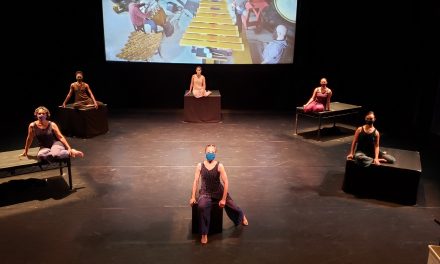Deborah Brockus, founder of Brockus Project Dance (BPD), took the stage and introduced her newest presentation, THE SUNFLOWER PROJECT, thanking the creators, performers, and the California Arts Grant Council. She described it as “an intergenerational sisterhood of dancers from teens to established artists that collaboratively mentors an interwoven three-month dance residency program…for eight women artists and eighteen promising young dancers.” The choreographers were given approximately six weeks to create, develop, rehearse, and present a new dance piece. In approximately ninety-minutes, the evening featured original works ranging in dance styles from Ballet to Hip Hop, with a large weight on interpretive and contemporary dance genres.
Brockus, also the artistic director of BrockusRED, founded the organization in 1994 to bring more inclusion to dance and provide a space for the LA Dance community to create and develop new works. BPD supports artists from a culturally and racially diverse communities by providing a space of encouragement for artistic development. BPD has produced over two hundred showcases for over five hundred local, emerging and advanced choreographers. Each piece for THE SUNFLOWER PROJECT ranged from four to ten minutes, included two to six dancers for each new work, and most included the choreographer as a performer.
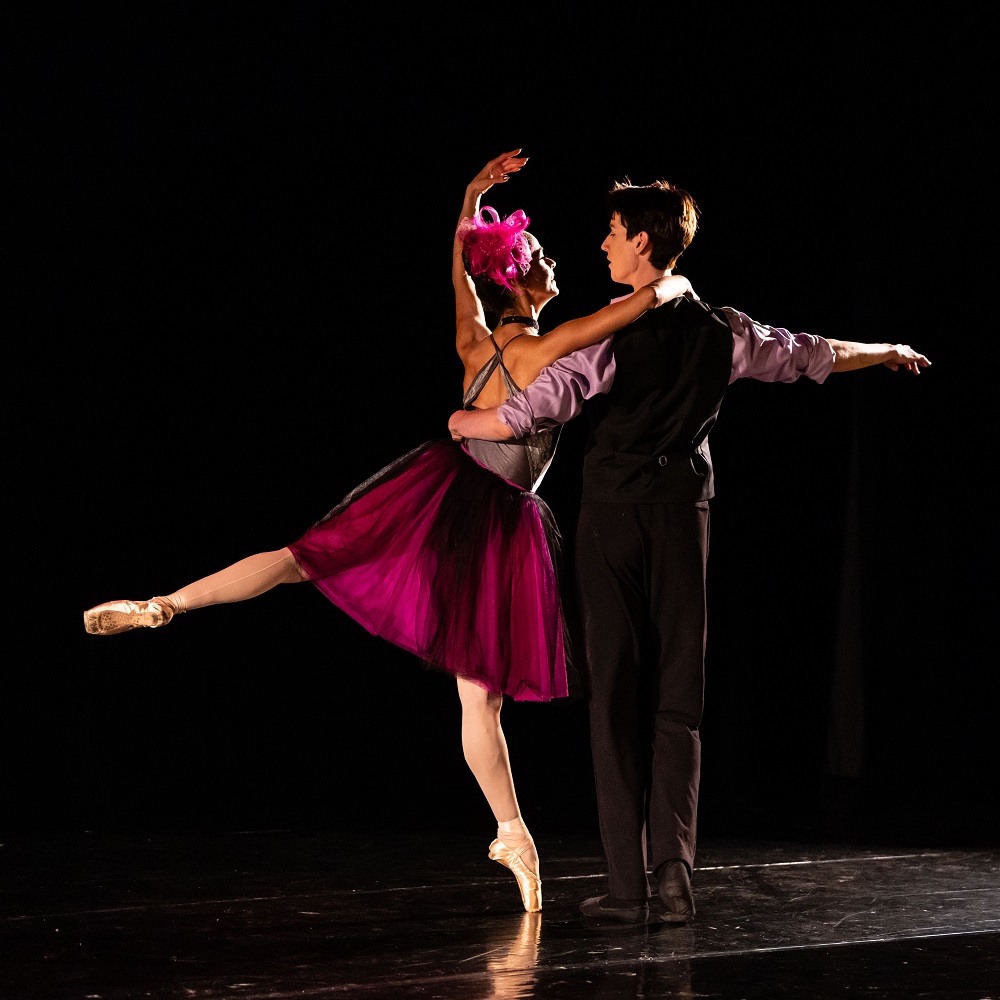
Freaks With Lines – (L-R) Susan Vishmid and Michael Hill in Vishmid’s “Puzzling Affection” – Photo by Skye Schmidt
HEGEMONY is the newest work by choreographer and Artistic Director of FREAKS WITH LINES Susan Vishmid. It was a short ten-minute three-act ballet that appeared to present the power struggle between the lead dancers, Owen Bakula (Opal) and Aramis Hermes Daley (Jeweler/Diamond). Bakula, a talented non-binary ballerina, was a standout displaying wonderful technique, extensions, and clearly accomplished ballet training. Daley presented a unique, almost comical take on the male lead ballerino by focusing on his hands and looking lost, while others tried to get his attention to continue dancing. Primarily performing on pointe, each of the other dancers had moments to show off their abilities.
Vishmid’s choreography lent itself to traditional ballet movement while she occasionally ventured off into less common modern interpretations of ballet. Minimal costumes featured the five “Jewel” dancers in basic ballet tights and skirts. Their sequin-covered headpieces in different “Jewel” colors, emphasized the idea of a Jeweler struggling with his gemstones. Classical music by Verdi, Gounod and Shostakovich helped inspire the choreographer, dually preserving classical dance and subverting traditional ballet norms.
Other standouts in the evening included IT’S OKAY TO CRY, by choreographer Shan Hafez, whose pronouns are They/He. In an emotional exploration of relationships, the four talented dancers, Keilan Stafford, Augustine Perez, Maija Knapp and choreographer Hafez were first seen in a double duet scenario. Eventually they joined together in a foursome that further explored the emotional aspect of the dance and pulled the audience into the struggle of lovers in a contemporary world burdened by human rights politics.
The unique and exciting blend of modern, interpretive, and street dance styles were coupled with the song IT’S OKAY TO CRY by transgender songwriter Sophie who tragically died at age 34. Listening to the lyrics, the song informed the piece by underlining more emotions. The costumes also seemed to challenge society’s norms of gender, with all the dancers wearing worn jeans and tops made of ropes across their chests. This short four-minute work ended a little too soon and abruptly. I felt that we could have continued further with this gifted young choreographer’s journey.
Another highlight was TRIP TYCH, choreographed and performed by Lydia McDonald along with Hanna Peddicord and Skye Schmidt Varga. The ten-minute piece included program notes stating, “prejudice and judgement leave scars on both victims and casters….and an opportunity for empathy and growth.” This defined a clear sense of darkness in the beginning of the work and an uplifted positivity in the end.
TRIP TYCH began with a lead dancer interpretively emoting in modern dance style while the other two dancers basically walked in tempo, stepping with the beats of the music as they navigated the space. The lead dancer constantly changed and danced their interpretation of struggle as the other two took their place in the musical stepping. Music by Anne Muller & Colin Stetson helped underline the beat, but also allowed for more expressive movement in the dance. All three dancers intertwined toward the final half of the piece, and one could feel the mood lifting, becoming more hopeful, as the dance continued. The choreography incorporated many beautiful, unique lifts and leaps which the trio performed exceptionally well.
The other five works were entertaining and had their moments and may benefit from additional development and rehearsals. Each had a specific voice and style, which was the purpose of this showcase. They include: CAUGHT IN STONE by Sarah Elizabeth Stanley, with dancers Cambria Anderson, Robert Huerta, Ashley Magaña and Stanley. It was an interpretative piece including stone props and expressive floor work; SUMMERTIME SUNFLOWERS by solo choreographer and dancer Tashara Gavin-Moorehead, was a personal, reflective, jazz and blues style piece focusing on African American culture, struggles and history. Gavin-Moorehead’s work also utilized spoken word and sunflowers as an important symbol of the Black experience; INTERIOR ROOM was a quintet featuring choreographer Andrea Burr with Nicole Voris, Kaitwan Jackson, Himerria Wortham and Rebecca Lee. It was a modern dance in three movements – highlighted by modern almost alien-like performance-piece movement – that was underlined by its techno arhythmic music and included segments by Kronos Quartet and Laurie Anderson; DUALITY by Elizabeth Strano joined by dancer Morgan Lanvin, was a funny exploration of the rehearsal of a new dance piece and the miscommunications between choreographer and dancer. It featured club, street, hip-hop and modern style movements interlaced with conversations between the two performers; and finally THE FEELING IS NOT IMPENDING DOOM choreographed and performed by Mia Moraru along with dancers Denali Huff, Hannah Joo, Alice Lousen and Elsie Neilson. This was a rhythmic beating expressive modern work with the main character essentially pursued by others and involved periods of silence. There were sound effects of water dropping mirrored in the movements, isolation, across the room walks, and floor work reminiscent of dance class exercises. Everything in the work was heightened by the emotion of the sound and visuals of the dancers.
All in all, the evening was a delightful exploration of new dance works, in a wonderfully large space with simple yet deft lighting by Evan Nie. Nie focused on the dancers in specific areas and washed the stage with light when the choreography covered the entire stage. Brockus presented a concise and entertaining introduction to these eight choreographers and provided a platform for dance in Los Angeles to continue to evolve and explore.
For more information about Brockus Project Dance, please visit their website.
This article was edited 7/8/23.
Written by Anthony Marciona for LA Dance Chronicle.
Featured image: Augustine Perez, Keilan Stafford, Shan Hafez, and Maija Knapp – IT’S OKAY TO CRY – Photo courtesy of the artists.

